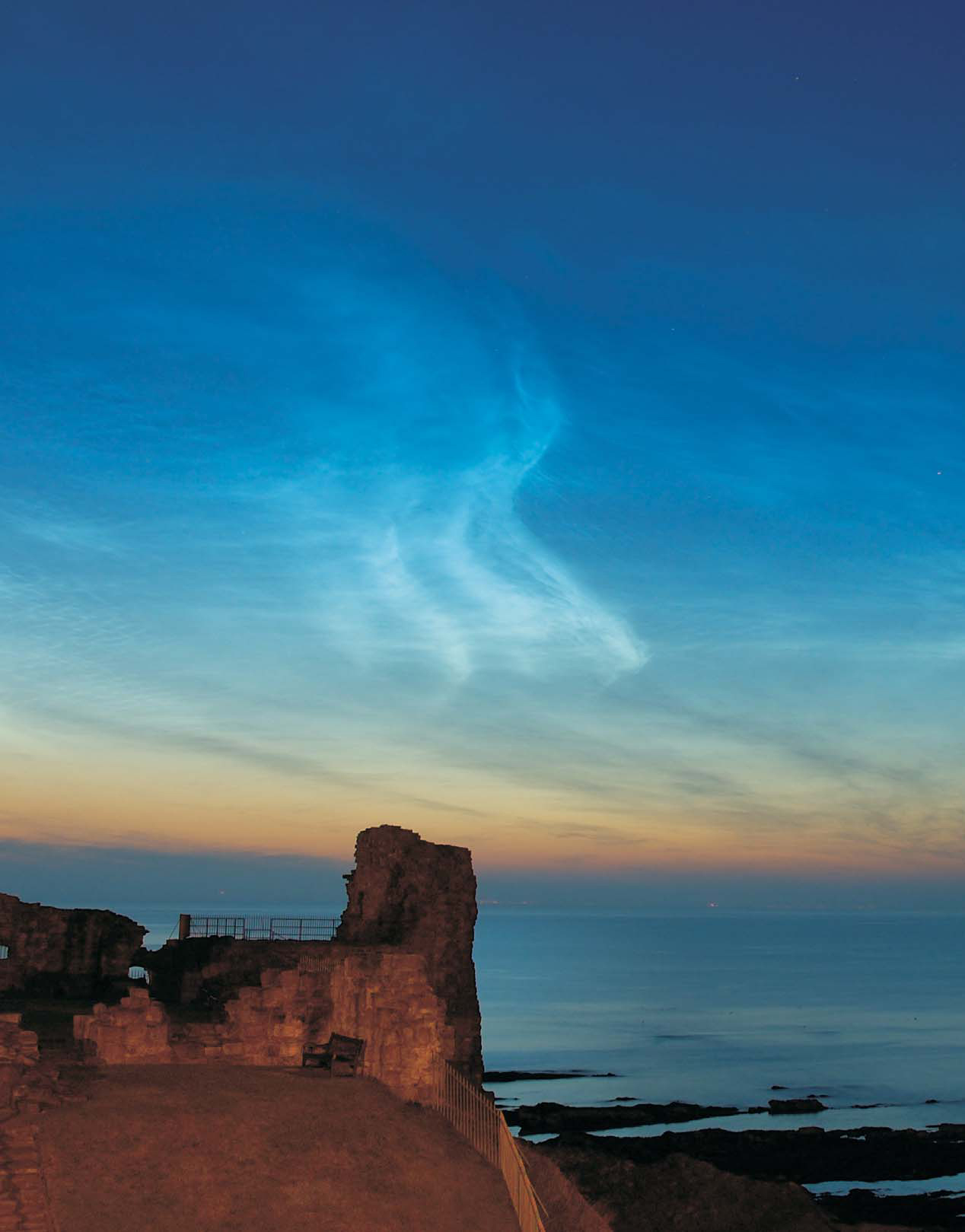Noctilucent clouds
DOI: 10.1063/1.2754620
This photograph of the night sky over St. Andrews, Scotland, was taken around 1:30am in mid-June 2006. The bright, wispy bands are noctilucent (“night glowing”) clouds, also called polar mesospheric clouds. Visible at high latitudes (roughly 50–60°) of both the northern and southern hemispheres in the summer months, NLCs form in the upper mesosphere some 80 kilometers above Earth’s surface, far above the familiar weather clouds found in the troposphere at altitudes of a few kilometers. Although the Sun is below the horizon, NLCs are sufficiently high that they still receive—and reflect—direct sunlight. Noctilucent clouds, like ordinary clouds, are formed from ice crystals. The formation process is different at such high altitudes, though, and the details of that process are as yet unknown. To learn more about NLCs, NASA launched the Aeronomy of Ice in the Mesosphere (AIM) satellite on 25 April. From the data collected during its two-year mission, principal investigator James Russell of Hampton University and his collaborators hope to figure out why NLCs are appearing at lower latitudes and are growing brighter and more frequent.
The online version of this Back Scatter has links to additional photographs and to more information about NLCs and AIM.
To submit candidate images for Back Scatter, visit http://www.physicstoday.org/backscatter.html

Photo courtesy of Simon Prosser, University of St. Andrews.





